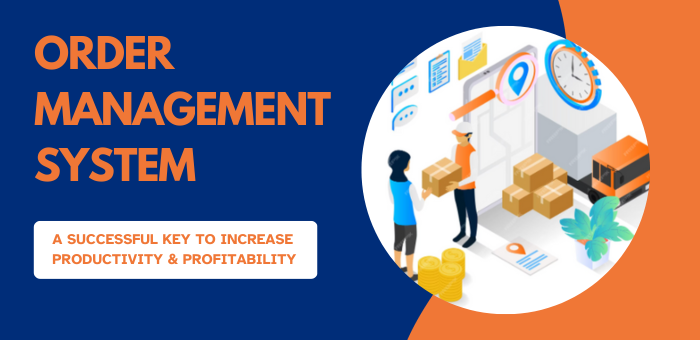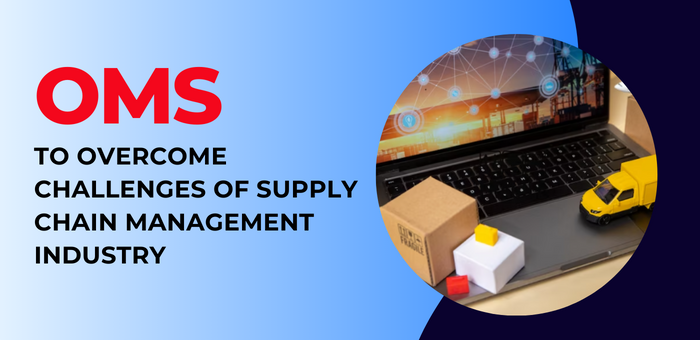Order Management System: A Successful Key to Increase Productivity And Profitability
You might know that optimization of order management processes is critical for enhancing productivity and profitability. This optimization can easily be done by using a strategic tool such as Order Management System (OMS), that can streamline business operations, improve customer experience, and drive revenue growth.
The recent report by Marketsandmarkets predicts that the order management systems market is projected to grow from $2.7 Billion in 2022 to $4.2 Billion by 2027, at a CAGR of 9.4% from 2022 to 2027. The growth of the order management systems market can be attributed to the increasing demand for cloud-based order management systems and the growing trend of omni-channel retailing.
OMS offers real-time visibility into the order life cycle and prevents order from corrupted, delayed or lost during the fulfillment procedure.
Let’s explore more about order management systems in this blog.
What is Order Management Systems?
An Order Management System (OMS) is a software solution designed to facilitate and automate various stages of the order lifecycle, from order creation to fulfillment and delivery. This software solution organizes data dynamically to increase the efficiency of order fulfillment and thus, decrease delay in processing.
The order management system t serves as a central hub for managing orders across multiple sales channels, such as e-commerce platforms, brick-and-mortar stores, call centers, and more. OMS integrates with inventory management, customer relationship management (CRM), and other critical systems to provide a holistic view of the order process.
Salient Features of Order Management System
- OMS enables the capture of orders from various sources, including online storefronts, mobile apps, and in-store sales, consolidating them into a single system for efficient processing.
- It maintains real-time inventory visibility, preventing overselling and ensuring accurate stock levels for timely order fulfillment.
- OMS intelligently routes orders to the most suitable fulfillment center based on factors like inventory availability, shipping cost, and customer location.
- Customers and stakeholders can track orders in real-time, providing transparency and enhancing the overall customer experience.
- OMS automates and streamlines the returns process, making it easier for customers to initiate returns while ensuring returned items are appropriately handled.
- It integrates seamlessly with other systems like CRM, accounting software, and logistics providers, facilitating data sharing and reducing manual data entry.
- OMS allows businesses to offer customizable order options, such as gift wrapping or personalized messages, to cater to individual customer preferences.
Why Should You Implement OMS?
There are several reasons for which you should implement OMS in your existing business system. Some of which include:
- Automation of order processes reduces manual errors, minimizes order processing time, and improves overall operational efficiency.
- Real-time inventory tracking prevents stockouts and overstock situations, leading to reduced carrying costs.
- Enhanced order tracking, accurate delivery estimates, and efficient returns handling contribute to higher customer satisfaction.
- OMS is scalable, adapting to the changing needs of businesses as they grow and expand.
- OMS collects valuable data on order performance, allowing businesses to make informed decisions and optimize their processes continuously.
How to Implement an Order Management System
Read below the top six steps to implement an order management system into your business-
Step 1- Select the Right OMS
Choosing the right OMS is a critical decision. Consider factors such as your business size, industry, sales channels, and integration requirements. Some popular OMS solutions include Oracle Order Management, SAP Order Management, and cloud-based options like Salesforce Order Management.
Step 2- Integration with Existing Systems
To maximize the benefits of an OMS, ensure seamless integration with other core systems like CRM, ERP (Enterprise Resource Planning), and logistics providers. This integration streamlines data exchange and enhances overall process efficiency.
Step 3- Data Migration
When implementing an OMS, data migration is often necessary. This involves transferring historical order data, customer information, and inventory data to the new system. It’s essential to plan this process meticulously to avoid data loss or errors.
Step 4- Customization and Configuration
Customize the OMS to align with your unique business requirements. Configure the system to support your order processing workflows, including order routing rules and approval processes.
Step 5- Training and Change Management
Invest in comprehensive training for your employees to ensure they can effectively use the new OMS. Additionally, establish change management processes to smooth the transition and address any resistance to new procedures.
Step 6- Testing
Thoroughly test the OMS before going live to identify and address any issues. Conduct testing for order processing, inventory management, and integration with other systems to ensure seamless functionality.
Leveraging OMS for Increased Productivity and Profitability
Here is how OMS helps in increasing productivity and profitability of your business-
(1) Streamlined Order Processing
OMS automates order processing, reducing manual intervention and errors. This leads to faster order fulfillment and increased throughput, ultimately boosting productivity.
(2) Accurate Inventory Management
Real-time inventory tracking provided by OMS ensures accurate stock levels, reducing the risk of stockouts and overstock situations. This optimization lowers carrying costs and maximizes profitability.
(3) Enhanced Customer Experience
OMS allows customers to track their orders in real-time and receive accurate delivery estimates. Efficient returns handling also contributes to an overall positive customer experience, increasing customer loyalty and retention.
(4) Multi-Channel Sales
With OMS, businesses can efficiently manage orders from various sales channels, including e-commerce platforms, brick-and-mortar stores, and marketplaces. This expanded reach can lead to increased sales and revenue.
(5) Data-Driven Decision-Making
OMS collects valuable data on order performance, customer behavior, and inventory turnover. By analyzing this data, businesses can make informed decisions to optimize processes, reduce costs, and identify opportunities for growth.
(6) Cost Reduction
Efficient order processing, accurate inventory management, and reduced manual labor all contribute to cost reduction. Businesses can redirect these cost savings into areas that drive growth and profitability.
(7) Scalability
OMS is designed to scale with your business. As your operations grow, the system can adapt to handle higher order volumes and increased complexity without compromising efficiency.
How to Measure Success with OMS
To get success while using order management system, you need to focus on two things mainly-
- Key Performance Indicators (KPIs)
To gauge the effectiveness of your OMS implementation, track key performance indicators such as order processing time, order accuracy, inventory turnover rate, and customer satisfaction scores. - Continuous Improvement
Regularly review and assess your OMS processes. Identify bottlenecks and areas for improvement, and implement changes to enhance productivity and profitability continually.
Final Takeaway
An Order Management System is a powerful tool that can significantly impact a business’s productivity and profitability. By automating order processing, optimizing inventory management, and enhancing the customer experience, an OMS contributes to operational efficiency and customer satisfaction.
Implementing the right OMS, integrating it with existing systems, and investing in training and change management are essential steps to ensure successful adoption. The ability to leverage data-driven insights and continuously improve processes further solidifies the OMS as a key driver of success in today’s competitive business landscape. When used effectively, an OMS becomes a strategic asset that not only streamlines operations but also fuels growth and profitability.
Stay tuned for more updates!
If you want to buy such a reliable order management system for your business, you can reach out to Meridian Technology Solutions. We develop a fully functional order management system that helps increase efficiency of your business.
Get in touch.





